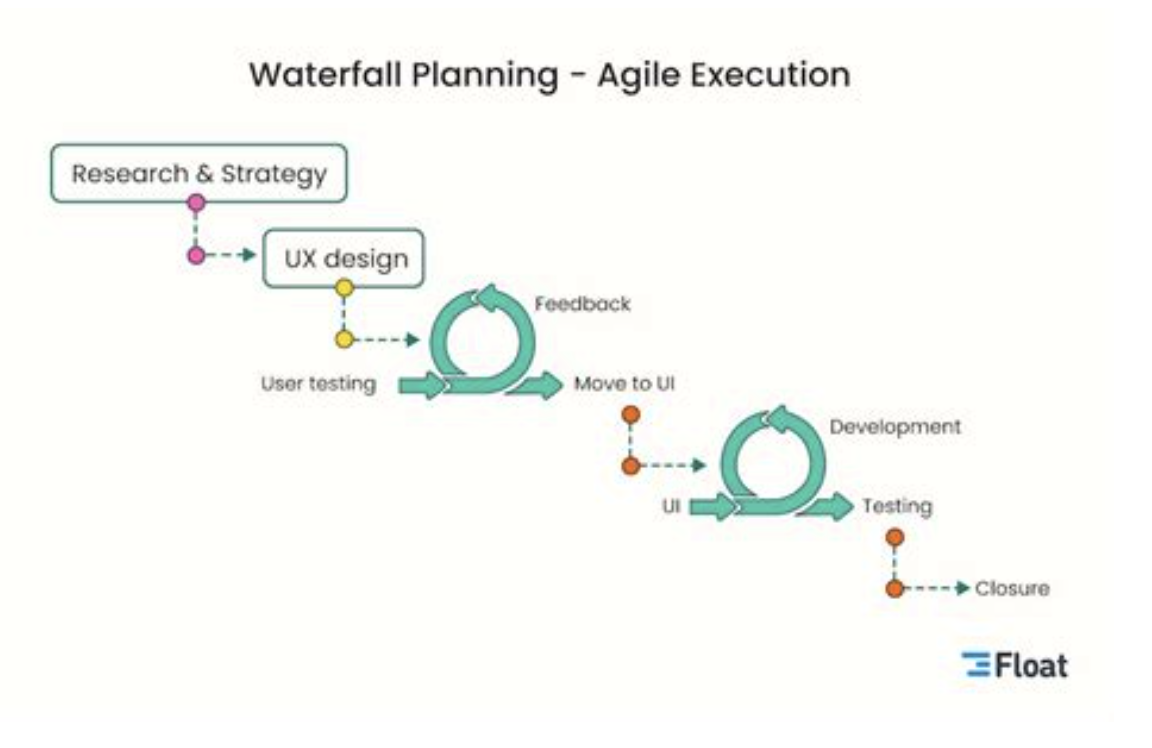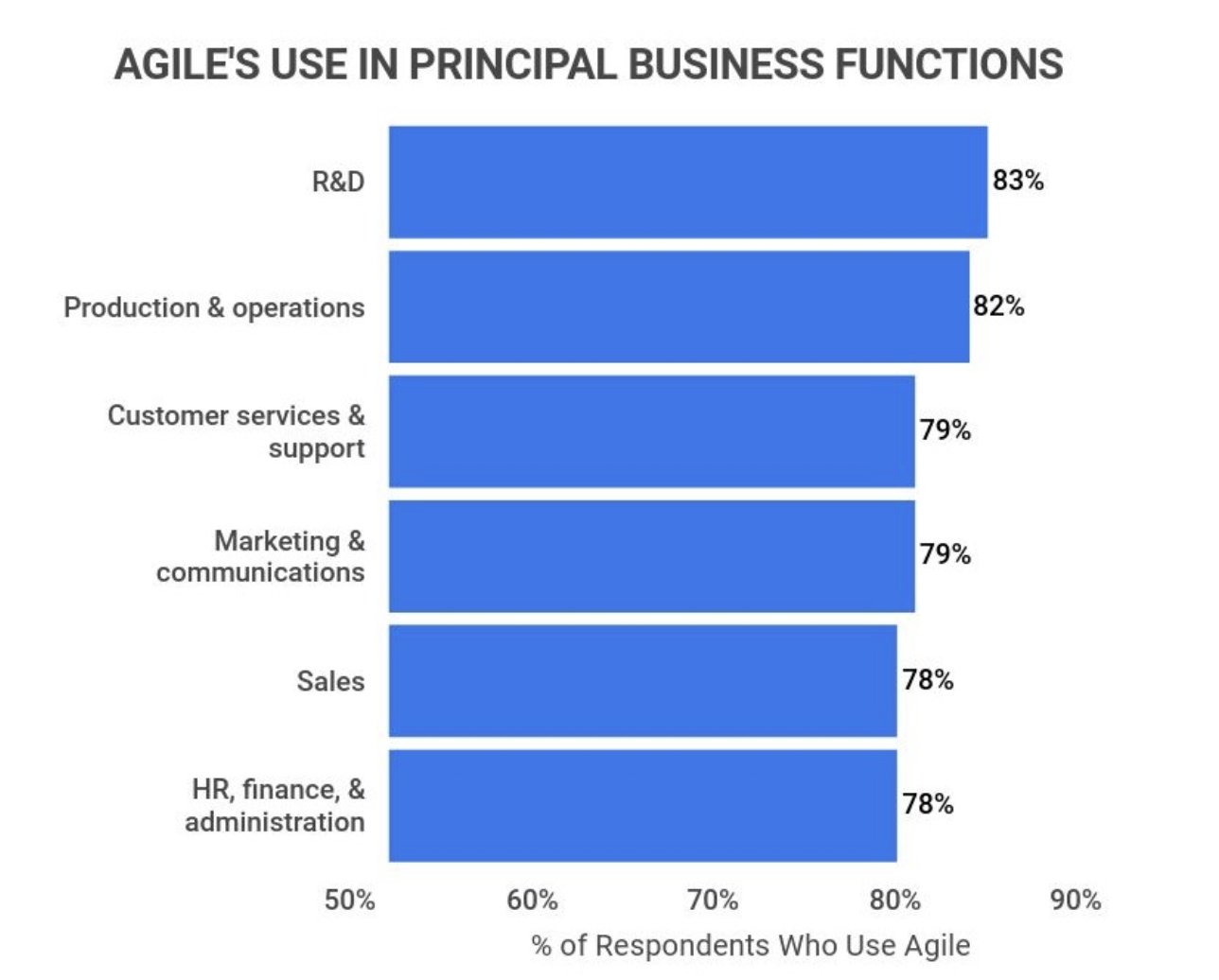
Modern product teams are stuck between two critical imperatives: move fast to capture market opportunities or slow down to ensure quality, compliance, and alignment. This persistent tension is especially pronounced in organizations attempting to merge agile product development with the rigor of the Software Development Life Cycle (SDLC).
According to Forbes, AI and GenAI are refining core Agile activities by automating test case generation, estimating story points from historical data, identifying workflow bottlenecks, and improving sprint planning and team collaboration. These advancements enable Agile teams to iterate faster, make data-driven decisions, and maintain structure in fast-paced environments.
Yet even with these AI-driven improvements, the core issue remains: A fundamental disconnect between the fast, iterative mindset of Minimum Viable Product (MVP) culture and the structured documentation-heavy world of traditional delivery models. While MVPs favor lean experimentation, SDLC demands predictability and process integrity. Too often, teams must choose between momentum and governance, resulting in costly delays, rework, or brittle solutions.
Introducing the MVP Execution Framework: Lean Speed, Structured Delivery
The MVP Execution Framework is a hybrid, repeatable approach designed to bridge this divide. It enables teams to move quickly without abandoning control, combining the validation-first focus of MVPs with the phase-driven execution of SDLC.
Unlike conventional frameworks that force trade-offs, this model embraces both philosophies.
- Built on SDLC Foundations: Each phase, initiation, planning, execution, testing, deployment, and maintenance, is preserved, but modified to support early learning and iterative decision-making.
- Configured for Rapid Iteration and Embedded Feedback: Discovery and development cycles are tightly linked through continuous validation, real-time analytics, and structured sprint reviews that keep the product aligned with user needs and business priorities.
- Structured for Multi-Stakeholder Involvement: Framework artifacts are designed to be cross-functional, from technical documentation to decision logs, ensuring alignment across engineering, design, marketing, and compliance from day one.
- Flexible Enough to Scale: Whether it’s a 2-person startup team testing a core feature or a 10-squad enterprise release with regulatory oversight, the framework adapts in complexity and cadence without losing fidelity.
Despite widespread Agile adoption, many teams still struggle to execute consistently across functions. According to the 17th State of Agile Report, 42% of organizations cite a lack of consistent practices and processes across teams as a significant barrier to successful Agile adoption.
However, the MVP Execution Framework solves this by offering a clear, repeatable structure that aligns cross-functional teams, embeds validation, and supports disciplined delivery at scale.
Why This Framework Works: Strategic Benefits You Can Measure
Image: Online Shopping Customer Point Manage | Stokkete | Shutterstock
The MVP Execution Framework has produced measurable results across varied product environments. It succeeds not just because of what it includes, but because of what it prevents: wasted time, misaligned teams, and premature scaling.
1. Deliver Speed with Substance
Rapid development is only valuable when it delivers complete, compliant solutions. The framework bakes in validation early and integrates governance checkpoints throughout, allowing products to launch faster without compromising on business or regulatory requirements.
2. Improve Decision Quality Through Validated Learning
Early feedback prevents costly missteps. The framework integrates validated learning into every phase, ensuring decisions are based on real user behavior rather than assumptions or internal bias. One key strength of the MVP Execution Framework is that it embeds validated learning as the unit of progress, not just output. Harvard Business School calls this the essence of effective MVP work: learning with minimal effort, which translates into faster iterations and less wasted effort.
3. Align Cross-Functional Teams on Shared Goals
Rather than siloed execution, the framework ensures engineering, design, marketing, and compliance are aligned from planning to release. Shared objectives, synced timelines, and unified documentation reduce friction and missed expectations.
4. Scale Effectively Across Projects of All Sizes
The approach scales seamlessly, supporting both quick wins in feature teams and long-term investments in enterprise platforms. It remains lightweight for small teams but incorporates structure where needed.
Framework Breakdown: Five Phases That Unite MVP Thinking and SDLC Rigor
This diagram illustrates how modern teams begin with structured planning, such as strategy, requirements, and design, before shifting into Agile delivery cycles. It reflects the core architecture of the MVP Execution Framework, which blends SDLC rigor with fast, feedback-driven execution. Source: Float – Hybrid Project Management
This section outlines the core mechanics of the MVP Execution Framework, following a five-phase structure rooted in the SDLC but modified for MVP-first execution.
Phase 1: Prioritize the Right Problem
The process starts with disciplined problem selection. Teams map user pain points, assess business impact, and apply structured prioritization to ensure they tackle issues that matter. This avoids building fast but solving the wrong problems.
Phase 2: Validate Through Lean Discovery
Rather than jumping into delivery, teams validate concepts using interviews, clickable prototypes, and low-code experiments. This phase eliminates untested assumptions and surfaces critical requirements before they reach development.
Phase 3: Plan with Precision
Here, the SDLC structure kicks in. Teams define MVP scope, draft technical documentation, map dependencies, and outline risk controls. Planning is intentional but flexible, allowing fast delivery while respecting integration, security, and compliance needs.
Phase 4: Execute Iteratively with Measurable Feedback
Execution follows short sprints where teams build, measure, and learn continuously. This loop incorporates stakeholder demos, user testing, and telemetry reviews. Feedback is not a phase; it is built into every deliverable.
Phase 5: Scale Proven MVPs with Confidence
Validated MVPs are promoted into full-scale products. Teams expand capabilities based on data, not opinion. Refactoring, performance tuning, and roadmap grooming ensure readiness for broader adoption and growth.
Real-World Results: How the Framework Transformed Product Delivery
Figure: Agile’s Use Across Business Functions. Source: Zippia
Agile is no longer exclusive to engineering. As shown in the graph, it’s embedded across R&D (83%), operations (82%), customer support, marketing, sales, and even HR and finance. This widespread adoption signals a critical shift: organizations need structured frameworks to unify agile efforts across departments. The MVP Execution Framework delivers that cohesion by aligning priorities, embedding validation, and driving coordinated execution.
This framework has been successfully applied in high-stakes product environments to solve complex delivery challenges with measurable impact. It has been used to revamp complex business workflow, resulting in a 35% increase in annual revenue. Lean discovery identified drop-off points, and the MVP release delivered rapid improvement while remaining compliant with member data policies.
It also enabled the launch of a digital product catalog where iterative validation prevented overbuilding and precise planning supported smooth deployment across markets, generating $2 million in additional revenue in under six months.
Laying the Groundwork for High-Impact Product Strategy
Image: Product Development Concepts | thanmano | Shutterstock
The MVP Execution Framework is not just a delivery model. It’s a strategic operating system for modern product teams. It solves the core tension between moving fast and building right, delivering a scalable structure that empowers teams to validate early, align cross-functionally, and launch with confidence.
But this framework is only the beginning. In my upcoming book, The Minimal Path to Maximum Impact, I take these concepts further, transforming them into a practical, field-tested system that any team can adopt and scale. The book is designed for leaders and builders who are serious about closing the gap between product ambition and execution discipline.
Inside, you’ll find:
- Decision frameworks for prioritizing the right problems under real-world constraints
- Collaboration models to drive stakeholder alignment without compromise or gridlock
- Checklists to operationalize lean governance at speed
- Metrics and scorecards to measure product impact from MVP launch to full-scale growth
So, if you’re building products that matter and need a system that scales from prototype to platform, this framework is your launchpad. The book will give you all the tools, language, and strategies to lead with clarity and ultimately, deliver with purpose.
The path to high-impact delivery isn’t just faster. It’s smarter. And it starts here.
References
Digital AI. (2023) 17th State of Agile Report. https://digital.ai/resource-center/analyst-reports/state-of-agile-report/
Float. (2023) A Guide to Blending Agile and Traditional PM Methods in Hybrid Project Management. https://www.float.com/resources/hybrid-project-management
Forbes. (2024) Revolutionizing Agile: How AI And GenAI Are Transforming Project Management. https://www.forbes.com/councils/forbestechcouncil/2024/07/05/revolutionizing-agile-how-ai-and-genai-are-transforming-project-management/
Harvard Business School. (2021) MVP Development. https://entrepreneurship.hbs.edu/Documents/Session%20Summary/HBSRockMVPDevelopment.pdf
Zippia. (2023) 16 Amazing Agile Statistics [2023]: What Companies Use Agile Methodology. https://www.zippia.com/advice/agile-statistics/







